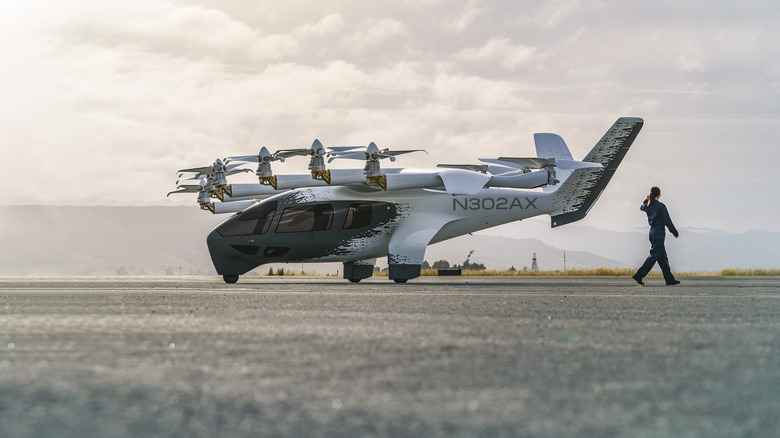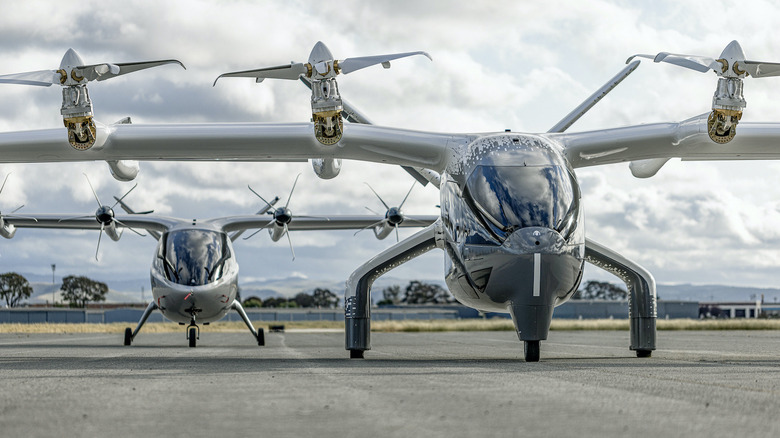AI Driven Flying Taxis Are Becoming A Reality With This Aviation Startup
It was only a matter of time before autonomous aviation became a reality. We previously reported that 2025 is the year flying taxis might take flight, and thanks to innovative startups like Archer Aviation, cutting-edge aircraft are quickly becoming a new norm. Recently, the San Jose-based company inked a deal to purchase Hawthorne Airport for $126 million. Situated in the greater Los Angeles area, Archer plans on turning the airport into the company's operational hub — as well as a testing ground for AI-powered flight technology.
Earlier this year, Archer was named the Official Air Taxi Provider of the LA28 Olympic and Paralympic Games and Team USA. Archer is just one of several aviation firms investing in electric vertical take-off and landing (eVTOLs) aircraft. Referring to its official air taxis as Midnight, these eVTOLs have 12 electric engines and propellers — allowing them to reach speeds of 150 mph. As for the 2028 Olympics, Archer plans on using the Midnight fleet of AI driven flying taxis to transport athletes and visitors between the event's numerous LA venues.
Companies like Archer Aviation are up against competitive electric aircraft designers like Joby Aviation of Santa Cruz, a firm that partnered with Uber and completed a flight between Marina and Monterey in only 12 minutes. It seems the greater world of flying is taking big leaps forward, with companies like Xpeng promising to deliver the first flying car in 2026.
Charting the future of air taxis
In a release issued by the company, Archer Aviation went on to detail some of its more specific AI initiatives, including "...AI-powered air traffic and ground operations management, in addition to other key technologies." With plans to open a new port at Oyster Point in South San Francisco, and progress toward commercial tasking for Midnight in the United Arab Emirates, it'll be interesting to see how the company's domestic and international ambitions expand alongside its AI research and development.
One challenge that Archer and its competitors have on their dockets is the official go-ahead from the Federal Aviation Administration (FAA). Not only does the agency need to approve these cutting-edge eVTOL designs, but new infrastructure, flight routes, and pilot training will also be required. For a year that gave us the world's first flying car, regulatory hurdles remain one of the biggest variables in the rollout of urban air programs. Archer's moves in Los Angeles, San Francisco, and the UAE suggest it's positioning itself to be a major player in this ongoing aerospace evolution.

